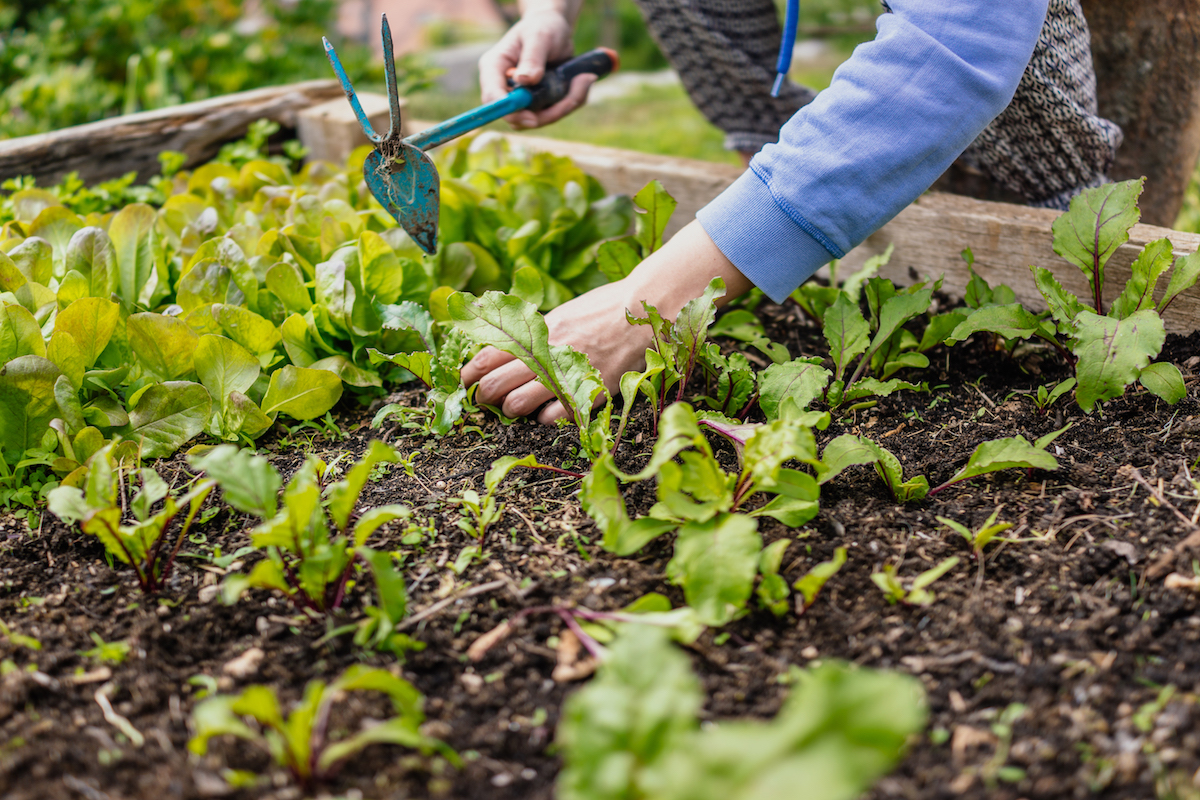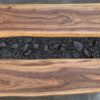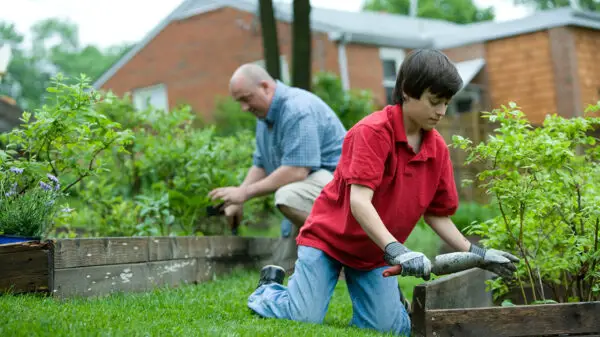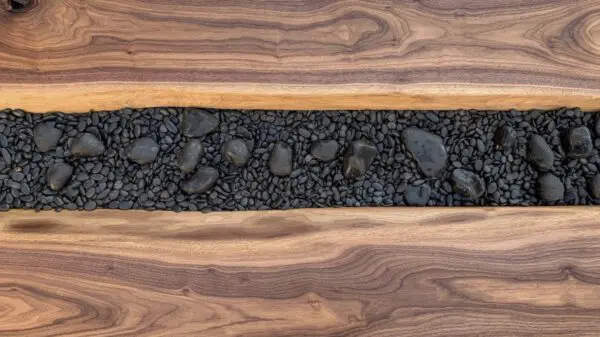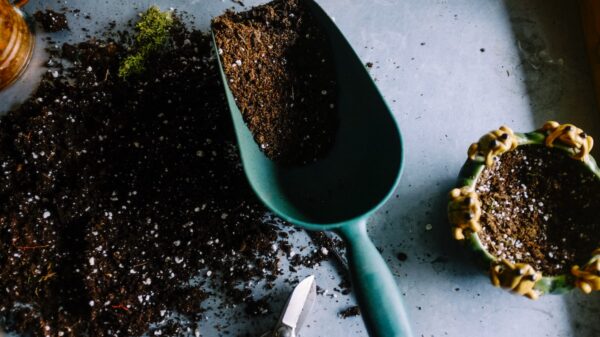How To Build a Raised Garden Bed
I’ve always wanted to put a raised garden bed in my yard, so I decided to do some research to find out how difficult they actually are to create.
So, how do you build a raised garden bed? You build a raised garden bed by choosing a location, measuring and marking where the bed will go, and leveling the area. Then you’ll add a liner, if desired and build the raised garden bed according to your measurements, starting with corner stakes.
There are a lot of creative liberties you can take when building a raised garden bed, as long as you follow the basic steps and principles.
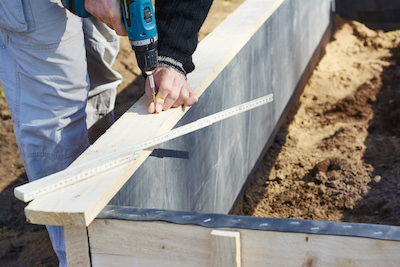
The Steps for Building a Raised Garden Bed
Building a raised garden bed will require some planning, time, and energy, but overall it isn’t a complicated project.
1. Choose a Site for Your Garden Bed
First, you’ll need to choose a site for your garden bed. Make sure it’s in an area that gets plenty of sunlight and is easy to access from all sides. You’ll also want to pay attention to how much water the area gets — you don’t want water pooling under your raised garden bed and drowning your plants.
2. Measure the Space
Then you will measure the space where you plan on putting the raised garden bed and mark off the boundaries with stakes or string. Remember to not make it so wide that you won’t be able to reach the plants in the middle of the bed — usually about three to four feet wide is about right.
3. Dig the Soil to Make the Garden Bed Level with the Ground
Now, we start digging out the soil within those boundaries so the garden bed will be level with the ground surrounding it. You can also add some compost at this time if needed. This doesn’t have to be precise, as you can fill in gaps later — you just need it level enough that you can lay the wood for the bed without much difficulty.
4. Line the Bottom of the Bed
Find a material to line the bottom of your raised bed, such as plastic sheeting or landscaping fabric, which helps prevent weeds from growing up into your beds and keeps moisture in longer during dry spells. Just remember that plastic sheeting will limit airflow, which can cause root rot, so use this material sparingly.
5. Place Boards Around the Edges and Nail/Screw Them In
Next, we will need to keep the raised bed in place. So you will place boards around the edge of your garden bed, using screws or nails to keep them in place. Consider starting with some corner posts that you can attach your edge pieces to for additional stability. Remember to make your garden bed deep enough that your plants have plenty of room without being so deep that you can’t reach the middle. About two feet — or three two-by-four boards — is typically a good height.
6. Fill the Bed with Soil and Compost
Fill your raised bed with a mixture of soil and compost, making sure to mix it up evenly so your plants will have access to plenty of nutrients and drainage. Add water as you go so that your soil starts out moist and you don’t have to work as hard to fully soak it.
7. Plant the Seeds
Plant your seeds or transplants into the soil, adding water and fertilizer as necessary. Depending on the type of plant you place in the garden bed, you may need to add stakes or trellises as well to lend them support as they grow. Tomatoes, peas, and other vines are most in need of these.
8. Maintaining the Garden Bed
Maintain the health of your new garden bed by weeding regularly, mulching around the plants, adding supplemental fertilizers or amendments as needed, and watering consistently — especially throughout dry spells. You also will need to make sure to keep pests of your bed.
And there you have it! You’ve built a raised garden bed and you’re ready to start growing. With the right maintenance, this garden bed should last you for many years of bumper crops. Now get out there and start gardening.
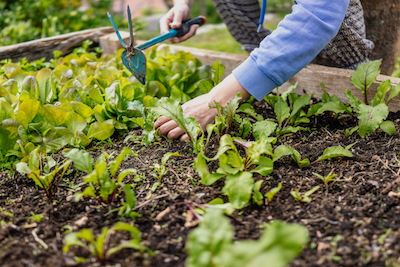
The Benefits of Raised Garden Beds
Raised garden beds offer a number of advantages over traditional in-ground gardens.
1. Better drainage
The soil in a raised bed is less likely to become waterlogged or compacted, which can lead to better drainage and healthier plants.
2. Less weeding
The plastic sheeting or landscaping fabric you place beneath the bed helps prevent weeds from growing up into your garden bed — meaning less time spent pulling them out later on.
3. Improved accessibility
You won’t have to kneel down or bend over as far when tending to a raised garden bed, making it easier for people of all ages and abilities to manage their gardens with ease.
4. Easier maintenance
Raised beds are perfect for those who don’t have the space or energy required for an in-ground garden, but still want the joys of growing their own food. This is because a garden with firm boundaries is far easier to manage than an in-ground flower bed where plants can go in and out without discretion.
5. Increased yields
Plants grown in raised beds tend to have bigger yields because they don’t have to compete for water and nutrients with other plants or weeds, as is often the case with traditional gardens.
6. Simple organization
Raised beds can be designed with different heights and widths that make it easier to organize your plants in a way that works for you. This makes it simpler to identify which are ready for harvest, and it keeps everything neat and tidy.
How to Upgrade Your Raised Garden Bed
Once you’ve built your raised garden bed, there are a few things you can do to make it even easier and more enjoyable to use.
1. Add drip lines
A drip line is a system of small hoses that connect to your outdoor faucet or sprinkler system and deliver water directly to the plants in the garden bed. This helps you save time and energy from having to manually water each plant, and it ensures that all of your plants get enough moisture without risking over-watering or soil erosion. If you have an automated sprinkler system to hook the drip lines to, you can even set them on a timer so you don’t have to worry about watering at all.
2. Make trellises
If you’re growing vines like tomatoes or cucumbers, consider adding a trellis structure for them to climb up on. This will help them stay upright and make harvesting easier, as well as add a visual dimension to your gardens.
3. Protect against pests
You can use mesh netting around your raised garden bed to keep out unwanted critters like birds or rabbits who might be tempted by your delicious fruits and veggies. You can also add row covers or floating row covers to the garden bed to protect your plants from frost and other environmental threats.
4. Grow both flowers and vegetables
Raised garden beds are perfect for both flowers and vegetables, so you can mix things up and make your garden more interesting. You can even add some herbs to your raised bed for a fragrant addition to your yard. The key is to research which plants thrive together and which ones don’t.
5. Landscape the ground around your raised garden beds
You can use mulch, ornamental stones, gravel, or other landscaping materials to beautify the ground around your raised beds and keep weeds from growing up. By keeping this area tidy, your garden beds will pop visually, not to mention be easier to access and take care of.
6. Use the square-foot planting system
Instead of planting your veggies, flowers, and herbs in rows, try the square-foot planting system. With this system, you divide up your garden bed into one-foot squares and plant different plants in each square. This method maximizes the use of your space while ensuring that each plant is properly spaced out to get the right amount of water and sunlight.
By utilizing raised garden beds, you can save time, energy, and money while growing fresh fruits and vegetables for your family. With a little bit of knowledge about how to upgrade your raised bed garden and some thoughtful design choices, you can create a beautiful and versatile garden that will last for years to come.
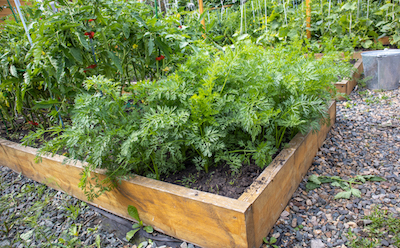
Related Questions
What materials are best for a raised garden bed?
The best materials for a raised garden bed will depend on your budget and design. Wood can be used to create beautiful, sturdy beds, but it does require regular maintenance such as sanding, staining, and sealing.
Metal and plastic can also be used to make raised beds, and some people prefer these because they are easier to clean and don’t require as much upkeep. Just keep in mind that these materials may not last as long as wood, so you’ll likely need to replace them sooner. They also won’t provide as much airflow as wood does.
What can you grow in a raised garden bed?
You can grow a variety of fruits and vegetables in your raised garden bed, as well as flowers or herbs. Some common crops that do well in raised beds include tomatoes, peppers, cucumbers, squash, lettuce, kale, spinach, and carrots.
As far as flowers and herbs go, you could try growing lavender, sunflowers, snapdragons, or oregano. Remember to research the plants you plan to grow, as some may need more or less water and sunlight than others.


